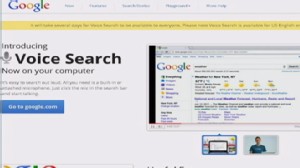

- #Packet sender chrome how to
- #Packet sender chrome for mac
- #Packet sender chrome generator
- #Packet sender chrome portable
Packet Sender’s built-in servers are configured to support either IPv4 or IPv6 but not both at the same time. If INI files are found, it will use them instead of %APPDATA% or Library/Application Support.
#Packet sender chrome for mac
For Mac users, this run-time directory is at PacketSender.app/Contents/MacOS. Windows users, this directory is the same place as the. For the SSL server, it will look for ps.key and ps.pem. At launch, it will look for packets.ini and ps_settings.ini in its run-time directory. More information about it can be found here. If you are publishing a network API, maintaining a public cloud page is significantly easier than painfully detailing (IP, port, type, etc) the packets to your users.

The cloud may also be used to publicly display and distribute your packets (via an URL) for collaboration, tutorials, end-users, etc. Packets sets can be quickly saved/retrieved/shared using the free Packet Sender Cloud service.
#Packet sender chrome portable
Tech support (by sending customers a portable Packet Sender with pre-defined settings and packets).
#Packet sender chrome generator
Stress-testing a device (using intense network generator tool).Testing network connectivity/firewalls (by having 2 Packet Senders talk to each other).Troubleshooting secure connections (using SSL ).Malware analysis (using the built-in UDP, TCP, SSL servers).Testing network APIs (using the built-in TCP, UDP, SSL clients).Test automation (using its command-line tool and/or hotkeys).Controlling network-based devices in ways beyond their original apps.It can be used for both commercial and personal use. Other places may recompile and redistribute Packet Sender. The mainline branch officially supports Windows, Mac, and Desktop Linux (with Qt).
#Packet sender chrome how to
I also have the MAC addresses of both the PC B and the router (it's LAN and it's WAN MAC) but don't really know how to use them in the WOL program.Packet Sender is an open-source utility to allow sending and receiving TCP, UDP, and SSL (encrypted TCP) packets. I really don't know what's the problem about WOL. Note: I am able to connect remotely to the PC B on the other subnet using the 3389 port so router's port forwarding works. But when I connect it on the 192.168.2.X network I am unable to do it. If I connect PC B to the 192.168.1.X network, meaning the same subnet as PC A then I am able to wake it up without a problem. But it doesn't work, it won't wake up the PC B through the WAN port. In the router's Virtual servers page I have entered this: Inbound port = 9, type = both (TCP / UDP), Private port = 9, Private IP address = 192.168.2.2. While PC A is connected into the 192.168.1.1 router. And PC B is connected into the 192.168.2.1 router. I have a UTP cable going from 192.168.1.X LAN port into the 192.168.2.1 router's WAN port. The computer (PC A) I'm on is on a 192.168.1.X network and the one I would like to wake up (PC B) is on the 192.168.2.X subnet. I'm using NirSoft's WakeMeOnLan to send the magic packet. I'll try to explain my WOL over WAN situation more in depth.


 0 kommentar(er)
0 kommentar(er)
